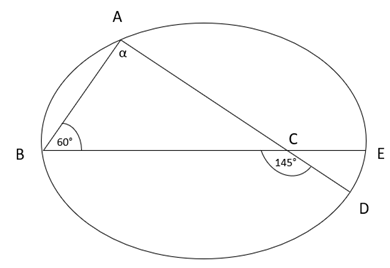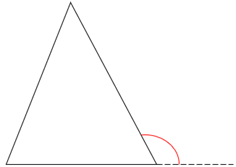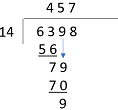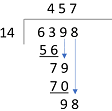About the NWEA MAP Growth Test
The 8th Grade Measurement of Academic Progress (MAP) Test is administered to students in the eighth grade, usually three times a year. The test serves as a reflection of the student’s progress throughout the school year. Teachers and parents use the MAP Test results to tailor a unique learning plan according to each student's educational strengths and weaknesses.
The 8th Grade MAP Test has three sections: Math, Language Usage, and Reading, with some schools adding a Science section. Note that all segments are aligned with the American Common Core standards. Designed as an adaptive test, the difficulty level of each question is dependent on whether the student has answered the preceding question correctly. Though untimed, students usually spend less than an hour on each section of the test.
Even though our 8th Grade MAP Practice Pack does not have the same adaptive function as the actual test, it successfully familiarizes your child with all test topics and variant question styles. Additionally, each question and answer is coupled with detailed explanations and solving tips to give your child the edge.
Preparing for the 8th Grade MAP Test will give your child a better understanding of the test, the questions to expect, and how to answer them. It will also contribute to a far more accurate picture of your child's academic potential and ability to grow and excel in his or her school studies.
*If you are looking for a different grade free MAP practice test, click on the following links- Kindergarten, 1st Grade, 2nd Grade, 3rd Grade, 4th Grade, 5th Grade, 6th Grade, 7th Grade, 9th-12th Grade.
NWEA MAP Sample Questions
| MAP 8th Grade Sample Question 1: Math |
|
What is the value of α? |
|
Answer & Explanation ▼ | ▲ |
| MAP 8th Grade Sample Question 2: Math |
|
What is 6398 ÷ 14? |
|
Answer & Explanation ▼ | ▲ |
| MAP 8th Grade Sample Question 3: Math |
|
Daniel's father's age is 48, which is four times greater than Daniel's age. What age will Daniel be next year? |
|
Answer & Explanation ▼ | ▲ |
The Mathematics section is a crucial part of the NWEA MAP Math Test, designed to assess a student's mathematical skills and knowledge. The test contains an average of 50 questions and doesn't have a time limit but usually takes 60-90 minutes, depending on the grade level of the student. The test has four main topics: Numbers and Operations, Algebra, Geometry, and Data Analysis & Probability.
In addition to these main topics, the test may also include questions that assess a student's foundational skills, such as their ability to identify and work with mathematical symbols and concepts. Students may also encounter vocabulary questions that focus on math-related terminology.
Our MAP 8th grade preparation contains a full-length Math simulation + 3 sub-topic math quizzes, to make sure you master each question type found in the test.
|
MAP 8th Grade Sample Question 1: Language Usage |
|
Which of the following sentences uses vivid imagery? |
|
Answer & Explanation ▼ | ▲ |
|
MAP 8th Grade Sample Question 2: Language Usage |
|
Read the following sentence Don’t spend time with Spencer’s circle of friends; they are the wolves of the school, and they are incredibly rude. Which of the following poetic and literary devices is used in the sentence on the left? |
|
Answer & Explanation ▼ | ▲ |
|
MAP 8th Grade Sample Question 3: Language Usage |
|
Which of the following sentences includes an example of vague pronoun use? |
|
Answer & Explanation ▼ | ▲ |
The NWEA MAP Language Usage Test was designed to assess a student's knowledge and understanding of the English language. The test contains approximately 52 questions and doesn't have a time limit but most students finish it in 60-75 minutes, depending on the grade level of the student. The test has various topics related to Language usage, including: Vocabulary, Grammar, Mechanics, and Writing.
In addition to these main topics, the test may also include questions that assess a student's understanding of Figurative language, Idioms, and Rhetorical Devices.
Our 8th grade MAP preparation offers a detailed Language Usage simulation and 6 video lessons that break down each subtopic ensuring that you have a thorough understanding of each question type found on the test.
| MAP 8th Grade Sample Question 1: Reading |
|
Read the paragraph. Then answer the question. It can be hard to wrap your head around the huge size of the universe and the tiny size of an atom. You could read hundreds of science books and still not get a sense for it. A short video called Powers of Ten provides a tour of the universe in just eight minutes. The video begins with a couple having a picnic, and then zooms out ten times further every ten seconds until the whole Earth is visible, then the Solar System, then the Milky Way Galaxy, and finally reaching the edge of the known universe. Then, the video quickly zooms back in to the couple and every 10 seconds keeps moving 10 times closer to a human hand until cells are visible, then molecules, and finally atoms. At the end of the video the viewer feels like both an ant and a giant! Which of the following sentences from the passage contains an idiom? |
|
Answer & Explanation ▼ | ▲ |
| MAP 8th Grade Sample Question 2: Reading |
|
Read the passage. |
|
Answer & Explanation ▼ | ▲ |
| MAP 8th Grade Sample Question 3: Reading |
|
What is the meaning of the word bidirectional? |
|
Answer & Explanation ▼ | ▲ |
The Reading section is an important part of the NWEA MAP Reading test, designed to assess a student's reading comprehension skills. The section contains 42 questions and doesn't have a time limit but takes approximately 50-60 minutes. The test has three main topics: Informational & Literary passages followed by related questions, and Foundational skills & Vocabulary questions that focus on phonics, word recognition, and word relationships.
Get fully prepared for the 8th-grade MAP Reading Test with our comprehensive preparation that includes a full-length Math simulation and 6 subject-targeted math quizzes. Our prep materials cover all Reading question types found in the actual test, ensuring you're fully equipped to succeed.
8th Grade MAP Test Scores
The NWEA MAP Growth scoring system is based on the Rasch unIT (RIT) scale. This scale provides a grade-independent score, which demonstrates the student's ability and knowledge on the various subjects the test measures. The RIT scale produces scores that gives an opportunity to monitor students growth from year to year along developmental scales.
Every question on the test has an RIT value that reflects the question and topic's complexity level. The final RIT score given to the student represents the specific complexity level in which he or she is predicted to answer approximately 50% of the questions correctly. In addition to a general RIT score, the students receive a separate RIT score for each section of the MAP test, which enables them to spot their strengths and weaknesses.
Visit TestPrep-Online’s MAP scores page to find more information on 8th Grade MAP Testing scores.
MAP Math for 8th Grade
The 8th grade MAP math section contains approximately 47-53 questions from various mathematical topics:
- Number Sense: Applying concepts of identification, counting, comparing, and ordering various types of numbers.
- Computation & Problem Solving: Applying properties of computation to solve real-world and mathematical problems involving various number types.
- Algebraic Concepts: Applying algebraic concepts, such as the extension of patterns, simplification of expressions, solving equations and inequalities, identification of points on the coordinate plane, and examination of functions.
- Geometry: Applying geometric concepts, including 2-D and 3-D figures identification and classification, symmetry and transformations, similar and congruent figures, the Pythagorean Theorem, and scale factors.
- Measurement: Using measurement, conversion, appropriate use of units, and calculation of geometric measures such as circumference, area, surface area and volume.
- Statistics & Probability: Application of methods of organizing, reading, and interpreting graphs, collecting, and analyzing data, and determining probability and using it to make predictions regarding possible outcomes.
Map Language Usage for 8th Grade
The 8th Grade MAP language usage section contains approximately 50-53 questions from various grammar and writing level topics:
- Mechanics: Understanding conventions of capitalization, punctuation, and spelling.
- Parts of Speech: Understanding various aspects of speech.
- Usage: Correct Usage of grammar and sentence structure.
- Writing Process: Efficiently use research and writing skills to plan, organize, develop, and revise writing
MAP Reading for 8th Grade
The 8th Grade MAP reading section contains approximately 40-43 questions including both informal text and literature comprehension:
- Word Meaning: Comprehension of words and nuances through context, clues, spot relations between words, and via the recognition of the structures behind them.
- Literary Concepts: Analyzation of literary text - determining primary ideas and themes, recognizing structures, and drawing conclusions.
- Informational Concepts: Examination, reading, and comprehension of informational texts – determining main ideas, making inferences and predictions, and analyzing the development of arguments
Preparing for the 8th Grade MAP Growth Test
Preparing for the 8th Grade MAP Test is crucial to obtaining the highest results possible. Even though the MAP Test is not timed, it can be especially tricky for those who are unfamiliar with the questions. Moreover, as many schools and gifted programs use the MAP scores to determine an applicant's qualification, a high MAP score can have a significant impact on your child's future.
So, how to prepare? TestPrep-Online offers 8th Grade MAP Practice Pack. This pack can upgrade your child performance on the test and help him or her learn to improve his or her skills on any of the test's sections. The pack features different methods of preparation and includes section-specific detailed study guides, graduated difficulty level quizzes, a full-length simulation, and hundreds of practice questions with detailed explanations for all three sections of the 8th Grade MAP test (Language Usage, Reading, and Math).
Free MAP 8th Grade PDF Test Practice
View and download a free TestPrep-Online 8th Grade MAP Sample Test. This is a printable practice test with various questions along with detailed explanations. This would be an excellent starting point for further learning towards the upcoming MAP exam.
The MAP, CogAT, and other trademarks are the property of their respective trademark holders. None of the trademark holders are affiliated with TestPrep-Online or this website.







